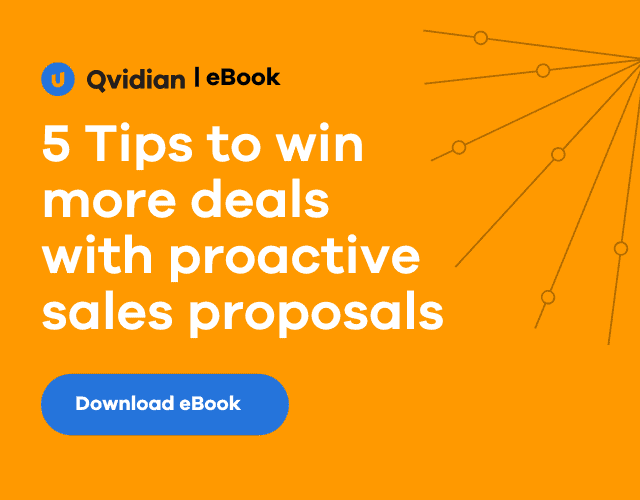Proposals are one of the most important steps of the sales process. The flipside of this fact, of course, is that RFP response mistakes can undercut months of great sales efforts.
There are seven key factors that can derail a proposal. Here’s what to avoid:
1. The Deal Wasn’t Qualified
When an RFP lands in your inbox unsolicited, it’s easy to be blinded by the prospect of a new opportunity. Here’s the potential for new business, dropped neatly into your lap. In many ways, there’s nothing more appealing than a self-motivated prospect. They’re clearly interested enough to proactively request information, so why not give it to them? No salesperson wants to leave money on the table.
But salespeople waste thousands of hours every year compiling proposals for deals that were dead on arrival.
This is one of the RFP response mistakes that’s easy to avoid. Before you jump into action, ask these four questions, first.
2. The Proposal Doesn’t Focus on the Customer’s Priorities
In many ways, the executive summary is the most important part of a proposal. But all too often, an executive summary is focused on the vendor—its company history, the product, how ready they are for this opportunity—that it entirely neglects to speak to the customer.
Instead, to fix one of the most common RFP response mistakes, focus on the problems your customer faces and what their future will look like once those problems are solved.
3. Your Proposal is Informative, Not Persuasive
Of course, what we want is for our prospects to make an informed decision that benefits both sides of the equation. Customers read proposals in order to make informed decisions with confidence.
But can’t just throw a laundry list of information at our potential customers. Instead, we need to write persuasively to avoid this RFP response mistake.
4. You Don’t Differentiate Your Offer
One of the most common RFP response mistakes people make is not differentiating their offer. The customer needs to see that there is a reason to choose you, based on something you do that is different and adds value. If they don’t see any differences between the proposals they receive, they’ll start to assume they’re all the same—and thus that they should simply find the cheapest price.
The strongest differentiators you can offer are related to your impact over the long-term.
5. There’s No Compelling Value Prop
A good value prop is a promise you make to your customer: you’ll get more of the results you need if you choose us.
But often, that’s missing from proposals. Be sure to provide plenty of evidence, whether through hard numbers or customer references, etc. to back up your claims.
6. The Proposal is Hard to Understand
Clarity is one of the essentials in a persuasive argument. Avoid acronyms, jargon, long sentences, and product names that risk confusing prospects.
You’ll also run into problems if your proposals are poorly formatted. Make sure to use a consistent, templated design that makes it easy to skim and consume.
7. Distractions Kill Your Credibility
It seems so minor, but one of the biggest mistakes you can make is simply to be careless. Typos, misspellings, grammar, and other little errors can kill your credibility faster than almost anything else.
One of the best ways to avert these errors is to implement standardized workflows (usually using proposal automation software).
Takeaways
When we attack these common RFP response mistakes head-on, we can increase our win rates and make good on our sales promises. It’s time to up our proposal game!


